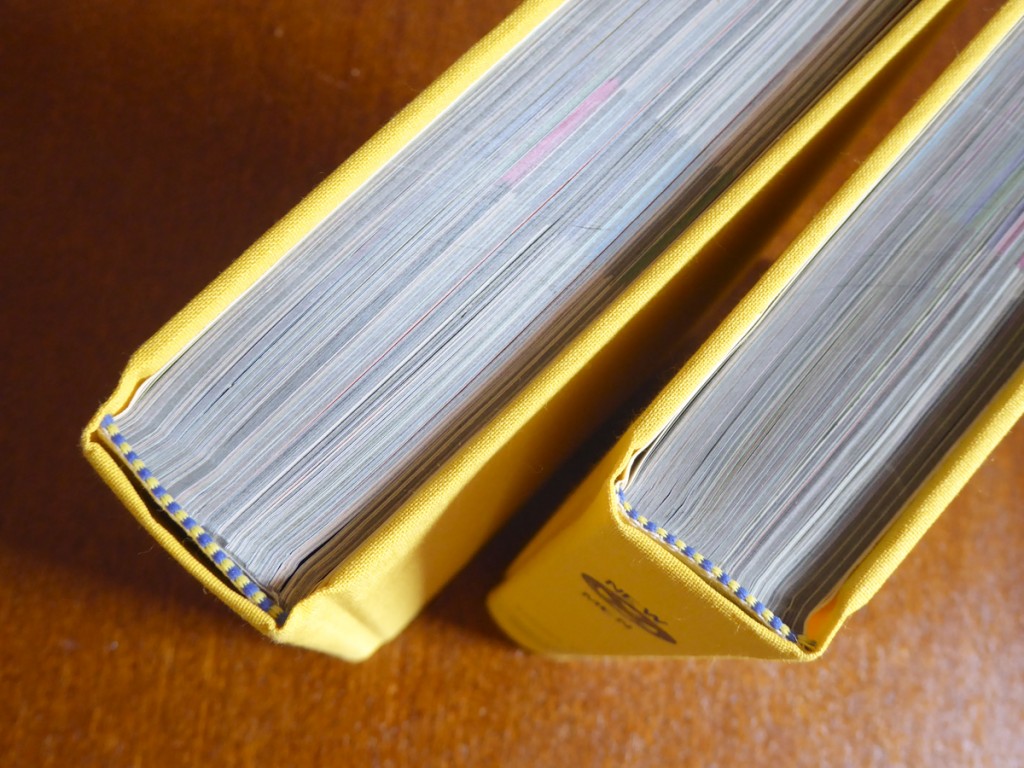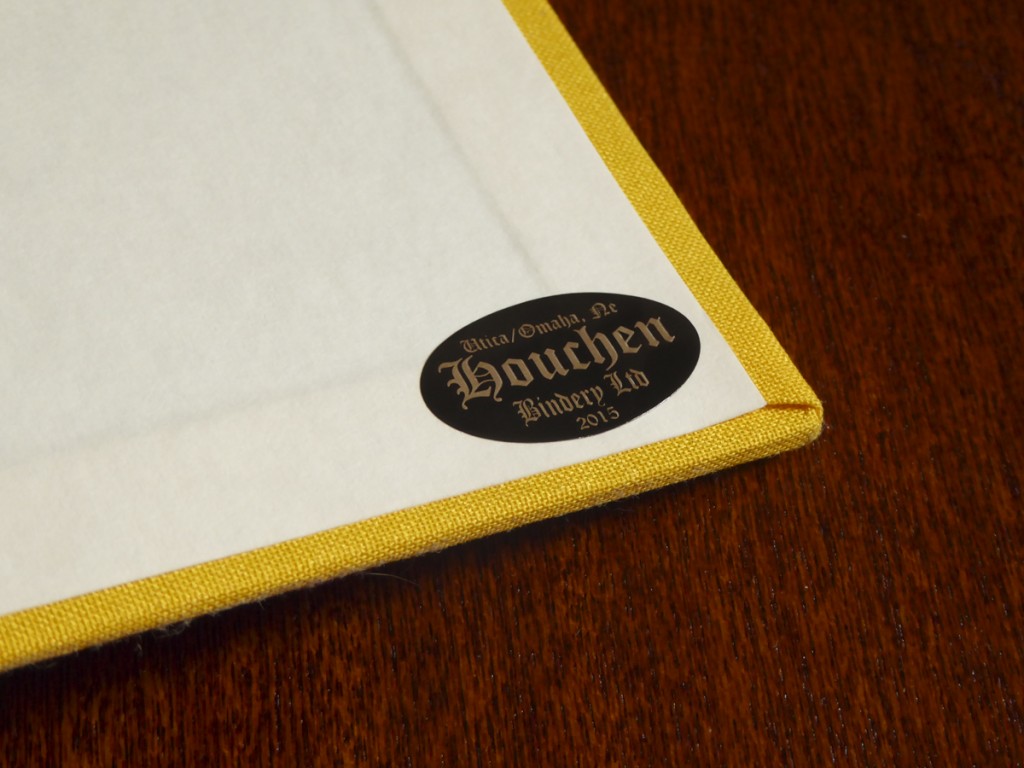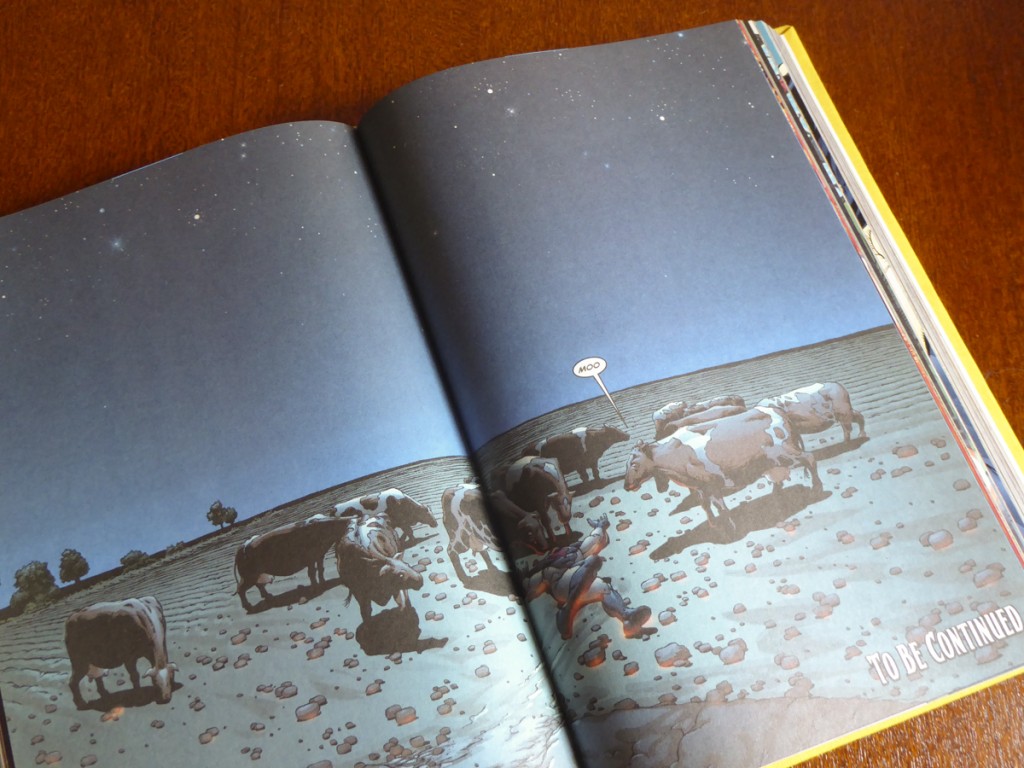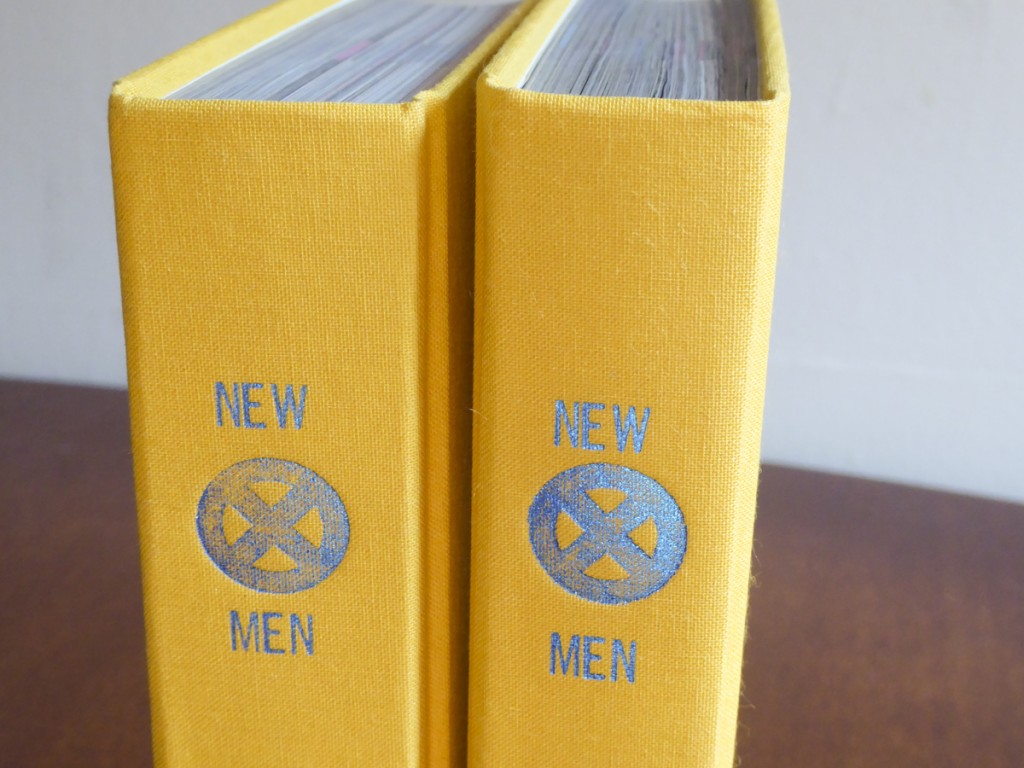Longtime comic book collectors have many of the same passions and struggles, but the most common of shared experiences? The woes of storage.
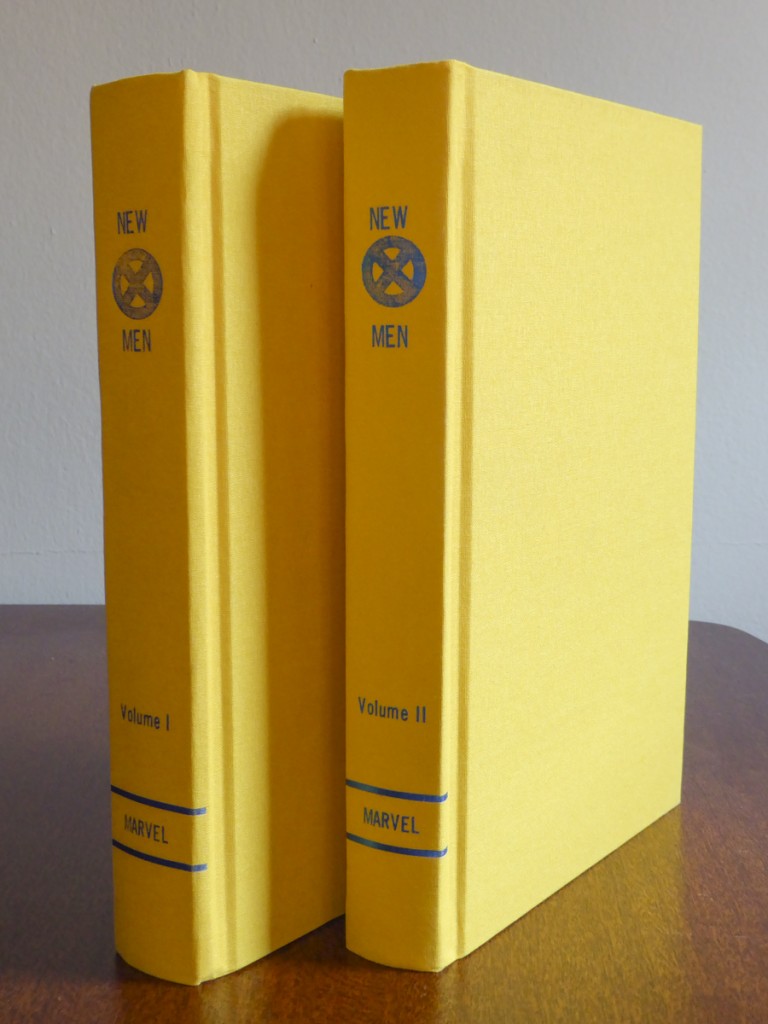 Oh, how quickly we find ourselves living among piles of boxes and books ready to be bagged, boarded, and stored for future enjoyment. That last part about picking up our once beloved floppies and giving them another read is probably the least likely to happen in that sequence of events.
Oh, how quickly we find ourselves living among piles of boxes and books ready to be bagged, boarded, and stored for future enjoyment. That last part about picking up our once beloved floppies and giving them another read is probably the least likely to happen in that sequence of events.
Many fans have found switching to trades to be an adequate solution to alleviate storage issues, as well as increasing the chance of re-reading favorite runs. This is perfect if you are patient enough to trade wait or if you don’t care for back matter, like letters columns. But with the comic market expanding to offer more and more choices, many comics still rely heavily on single issue sales to continue being published, especially if they are creator owned.
I prefer to read comics in their serial nature. The only trade paperbacks and hardcovers in my collection are for series that I missed the first time they were released or that would be too expensive to collect individually due to high demand. Good luck finding floppies of fan favorites with low initial print runs like David Aja and Matt Fraction’s Hawkeye!
If you share a similar hesitation to change your purchasing habits, but struggle to find storage space for all of your comics (or simply don’t like the clutter boxes create), having your comics bound may be a solution for you.
Comics that are bound into hardcover collections take up less space than if stored in boxes with bags and boards. As collected books sitting on a shelf, these comics are also more likely to be reread and shared. Though there may be considerable cost in having a collection of comics bound (they start at around $22-30 USD per book depending on the company), it is comparable in price to buying the hardcover collections released by publishers.
Recycling your original single issue purchases has its appeal too in that you are creating less material, enjoying it in its original form with covers and all, and there will be no editorial changes to the content. Re-coloring, paper stock changes, and the reduction of back matter content are all common practices for trade paperback releases. There is also something very special about knowing the hardcover in your collection consists of the original content purchased piecemeal over a long period of time.
Another appealing aspect of comic binding is the ability to customize your collections. You can include one shots, minis, favorite story arcs, and leave out the single issues you don’t like. Most binderies will also let you customize many aspects of the binding itself. You can choose the material, color, and type of cover. Though cloth and leather are popular options, many binderies offer laminated print covers. If you have commissioned a sketch piece from an artist, you can scan that and make it the cover of your collection. Of course, the more customization, the higher the cost; things like bookmark ribbons are priced as add-ons. But the options are endless, and if you’re going to make a unique artifact out of your comics, might as well make it as special as possible! Also, binding your comics is permanent, so it is important to get exactly what you want.
Having a collection bound does diminish the resale value, but not entirely. You’ll find many bound collections for sale on eBay. If the ability to resell rare issues is important to you, then I’d recommend only having common issues bound. Large runs of books published by the Big Two are good candidates for binding. To get a realistic idea of the retail value, don’t only trust comic price guides; check eBay for how much the market is valuing your run of Captain America before you have it bound.
The first comic I chose for binding was Grant Morrison and Frank Quitely’s run of New X-Men. This was a series I avidly collected as a new fan in the early 2000s, and I have always wanted to revisit it, but haven’t yet taken the time to do so. I’ve been lugging this collection of comics in boxes across state lines and through dozens of apartments, but never once did I unpack it to reread what I consider one of my favorite series. It will be considerably easier to do that now that the series is in two hardcovers rather than stored away in short boxes. The single issues took up the space of about one third of a short box, but they are now an attractive (and smaller) addition to my bookshelf.
I chose Houchen Bindery after seeing their booth at this year’s C2E2 convention in Chicago. Viewing their work in person really made my decision easy after years of waffling about trying the process. To prepare the books for binding, I removed all of the comics from their bags and boards. Since bags deteriorate at a quicker rate than boards, I threw out the bags and recycled the boards for new books. Houchen can create hardcovers that are up to 2.5 inches thick, but my run of New X-Men, which is at forty-one issues, was just a little too large for this. Instead, I split my New X-Men comics into two hardcovers. I chose the stopping point between the two books so as not to be in the middle of a story arc. This made one of the books a bit thicker than the other, but I found this preferable than splitting it by issue number.
If you do not want to include advertisements, you can take the staples out of your comics and remove the ads that do not have comic artwork. This will lower your overall page count, but it will take considerable time and care to do this, requiring that you remove staples for every book as well. I really enjoy looking at old ads, so I left all of mine in. Removing specific pages is only an option with the DFAB and PUR (glue) binding methods.
Once the comics were ready for binding, it took a while for me to decide on the customization. I opted for cloth covers and kept the text for the spine very simple. I considered adding the creators names to the spine, but since Frank Quitely did not do the artwork throughout the entire run, I left it to just the title, publisher, X symbol, and volume numbers I and II. Houchen has a number of stamp shapes to choose from, though they will create a custom stamp for extra cost.
My two books required their own order forms. I used thick rubber bands to keep the comics together, with boards on either end to protect the comics. The order forms were slipped underneath the rubber bands, and I also marked the boards on each collection with the title just in case the forms came loose.
Several weeks passed after I mailed in my comics before I received confirmation that they were complete. This was when I paid for the books, and they were shipped back to me. Overall, I was very pleased with the outcome. The collection was bound to my exact specifications, and the quality was superb. With the binding process I chose—DFAB—the comics are glued together at the spine. This is the most common and cost effective method, but it will involve some form of “gutter loss,” where you will see less of the inner page artwork than if the pages are sewn together using the Smyth binding method. Smyth binding requires that all comic pages are intact (no loose pages, no pages removed) and that there is a centerfold for them to sew through. I found the gutter loss on my DFAB method books to be minimal and really only noticeable on double page spreads. The thicker the volume is, the more gutter loss you will experience as well.
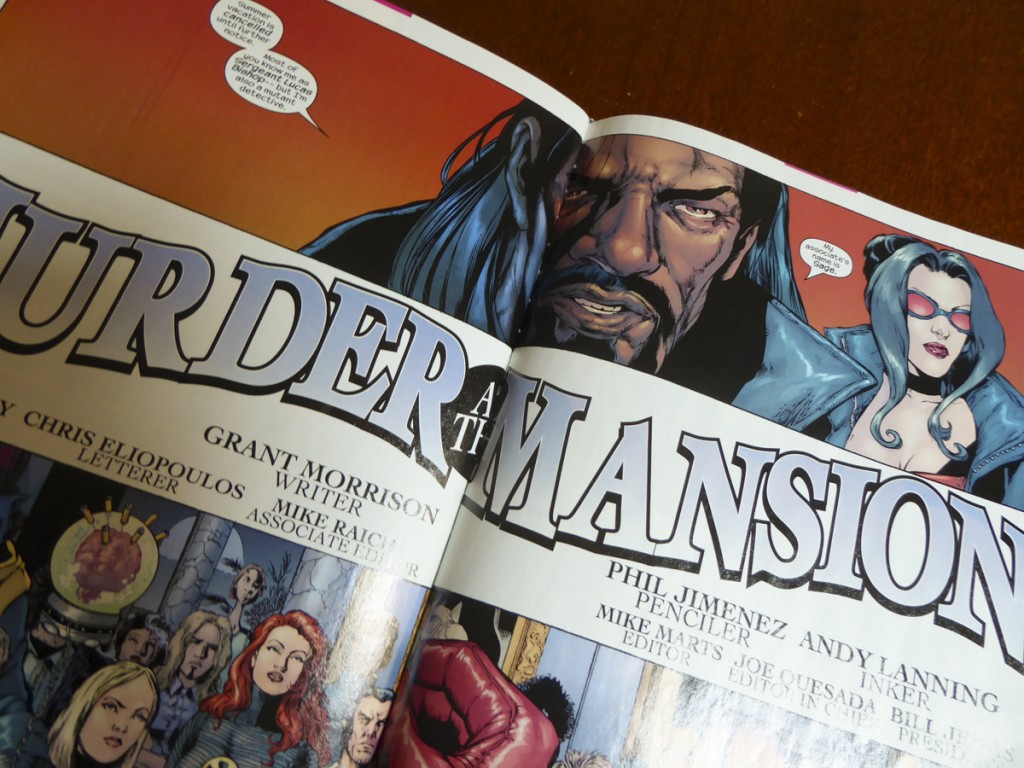

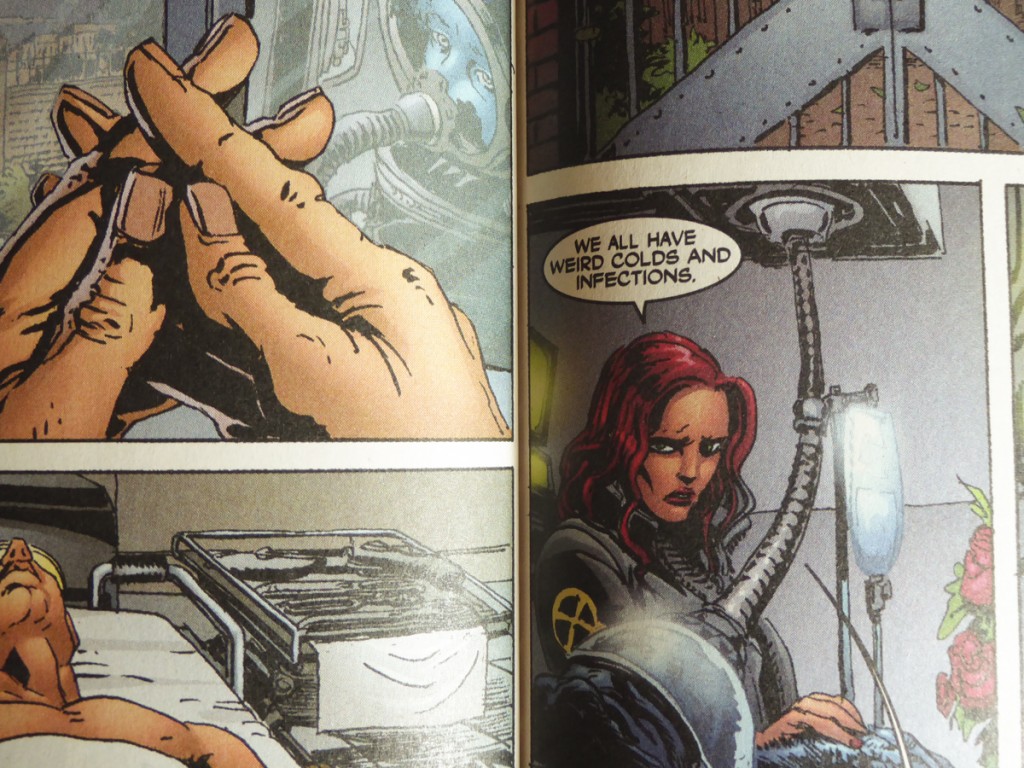
The die stamp and lettering on the spines are blue foil, but the X-symbol stamp did not turn out as consistent or colorful as the lettering. I am not sure if this was a normal result of the process or a defect in my binding, but I wasn’t bothered enough by it to send them back.
Like most collectors that try binding, my first custom hardcover will not be my last, and I’m already planning my next collection for binding. Knowing that I want to do this process for future books, I will likely commission original sketches or design prints for future volumes. Designing a custom cover for my collection of Bitch Planet sounds especially appealing.
For more information on binding, check out Houchen Bindery’s website for all of their custom options, along with many websites dedicated to fans of comic binding.



